Implementing an Office Automation System
Blog: ProcessMaker Blog
More organizations are turning to automation in the workplace to boost productivity and lower costs. Many of those organizations are aware of the benefits of automation, having downloaded some apps or software that automate one or more office tasks. This does not, however, mean that an organization has achieved automation. Full-scale automation is achieved through the implementation of an office automation system.
In this article we explore what an office automation system is and the benefits that it offers. From there, we will look at the implementation process and highlight some important features that you should look for in an office automation system.
What is an office automation system?
The system consists of both hardware and software solutions that enable the transfer of data between systems absent human contributions or interventions. Office automation eases organizational workloads by simplifying and automating processes like accounting, data management, training, facility management, and various administrative tasks.
An office automation system doesn’t consist of just going paperless. For example, maintaining all work product and client correspondence in a document management system. Yet, an office automation system offers organizations much more than going green by cutting down on paper. It is a powerful tool that can be used to eliminate manual processes, identify inefficient workflows, and facilitate informed decision-making.
Benefits of an Office Automation System
Implementing an office automation system offers organizations a broad range of benefits. These benefits include:
- Improved accuracy
- Reduced costs
- Reduced time and resources
- Data storage and management
- Data insights and more informed decisions
- Business process improvement
Improved accuracy
Humans make errors, properly implemented automated systems do not. Human errors are not only inefficient in that they must be corrected and lead to productivity delays, but they can be costly. For instance, adding too many digits when paying an employee or vendor. Serious mistakes can lead to security and compliance issues, potentially fines and penalties. An office automation system limits human intervention in the transfer of data, which minimizes the occurrence of errors.
Reduced costs
By automating complex business processes, organizations don’t need to invest as much into hiring for those tasks. As a result, operational costs are lower, while productivity and profit margins are significantly higher.
Reduced time and resources
Through automation, organizations can accomplish more with less. By eliminating tedious and time-consuming processes, employees can spend their time on more high value tasks. For example, returning to the popular paperless benefit, with office automation software employees do not need to spend as much time collecting important documentation, entering that information, or filing away voluminous paper copies. The system does it for them. In fact, 78% of leaders anticipate automation could free up 3 hours a day of an employee’s time.
Data storage and management
Office automation systems simplify data storage while giving organizations the ability to monitor and control data through an electronic document management system. Common features include things like task management and reminder systems, as well as easy access to information by key stakeholders.
Data insights and more informed decisions
Office automation systems give organizations access to large data sets, reports, and analytics. Access to data enables more informed decisions. Moreover, by analyzing data and key performance indicators, organizations can implement improvements to their processes to remove bottlenecks and other inefficiencies.
Through business process improvement, organizations optimize performance, improve the quality of their products or services, and ensure a higher level of compliance. The ability to improve business processes is what separates office automation systems from piecemeal automation technology.
How to implement an office automation system
The benefits of an office automation system are easy enough to understand and appreciate. Just about every organization in the world would welcome improved accuracy, greater efficiency, and higher profit margins. Yet, many organizations do not make the jump to an office automation system because the process seems overwhelming. With an ordered approach, however, implementation is both manageable and achievable.
Deciding what to automate
Before implementing an office automation system, the organization will need to spend time looking at which specific processes will need to be automated. Begin by looking at existing workflows to gain an understanding of the processes, stakeholders, and resources involved. One of the easiest ways to go about examining your workflows is through process mapping.
Business process mapping involves creating a visual representation of work processes to define what an organization does, how it does it, and who is responsible for each task. Many processes within an organization are undocumented. By creating visual depictions, stakeholders can identify bottlenecks in workflows and tasks that need streamlining. Creating a process map is simple with the drag and drop process modeler features of industry leading business process management software.
Key features of an office automation system
There are countless applications and software programs that promise improved efficiency through automation. As we discussed above, however, achieving organizational efficiency through an office automation system requires more than downloading a few apps. Rather, you need a comprehensive office automation solution that offers the following features:
Process modeling and workflow design
An important benefit of an office automation system is the ability to design and improve workflows. The solution that you choose should give you the ability to create detailed workflows in a matter of minutes. Leading solutions offer an intuitive design and include features like a drag and drop process modeler.
Mobile compatibility
In the age of the stay-at-home economy and the COVID-19 pandemic, mobility is more important than ever. Employees must be able to perform their functions from anywhere. A cloud-based solution is always secure and always accessible.
Integration
One of the biggest challenges that organizations face when attempting to automate their processes is integrating various third-party software or apps. Your office automation system should work seamlessly with your other tools like email marketing and your CRM system.
Managing tasks and deadlines
Task management is an important feature of office automation solutions. For processes to run smoothly, employees must know what to do and when to do it. Your office automation system should allow you to create and view pending tasks and deadlines, as well as redistribute tasks as needed.
Access control and security
To protect the security of your systems, you need to be able to set access privileges throughout the organization. Cloud-based solutions also offer advanced security features to protect data from being compromised.
Communication
An important feature of any automation system is the ability to communicate seamlessly. Stakeholders should have all the information they need to perform each task, as well as the ability to reach out to others for further assistance. Your office automation system should offer features like a form builder. Form builders can be used to capture data, display data from other systems, and even design approval screens for managers to make decisions.
Reporting and analytics
To evaluate and improve your office automation system, you need to have access to data and key performance indicators. Leading office automation systems have built-in reporting and analytics capabilities.
 Purchase the best office automation system for the organization
Purchase the best office automation system for the organization
To appreciate all the benefits that office automation has to offer, choose a provider that offers a feature-rich and easy to use cloud-based solution. ProcessMaker provides organizations with a low-code BPM that allows organizations to experience the benefits of automation from day one. Try ProcessMaker today for your office automation needs with a free 7 day trial or download our solution brief whitepaper.
The post Implementing an Office Automation System appeared first on ProcessMaker.
